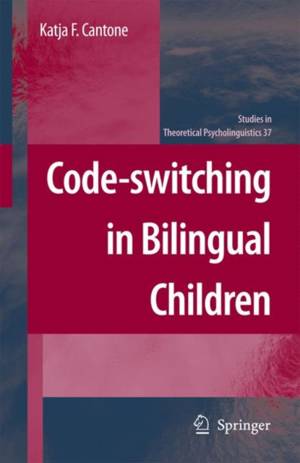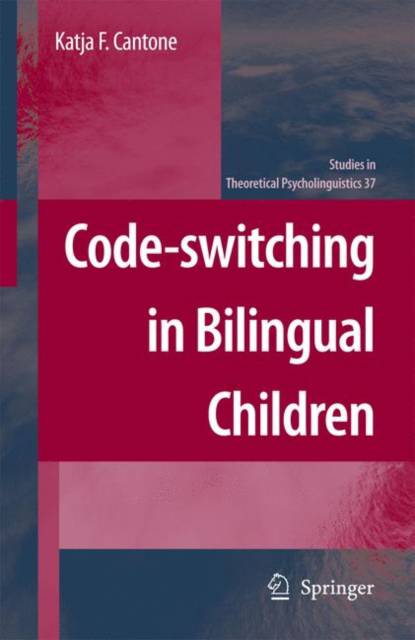
- Afhalen na 1 uur in een winkel met voorraad
- Gratis thuislevering in België vanaf € 30
- Ruim aanbod met 7 miljoen producten
- Afhalen na 1 uur in een winkel met voorraad
- Gratis thuislevering in België vanaf € 30
- Ruim aanbod met 7 miljoen producten
Zoeken
Omschrijving
This study investigates the issue of code-switching in young bilingual children, in particular, intra-sentential switches, that is, mixing within an utterance. The data come from five bilingual Italian/German ch- dren (age 1;8 to 5 years), who grew up in Hamburg, Germany. The term bilingual is used in order to describe a person who has been exposed to both languages from birth on (Meisel 1989:20). Hence, this work is placed within the research field of Bilingual First Language Acquisition. The present book discusses three main issues. The first assumption concerns language mixing in young bilingual children. Differently from former studies on mixing in children, I claim that bilingual children's mixed utterances should be analyzed in the same way as adult mixing. I further argue that child grammar is organized in the same way as adult grammar. Therefore, a grammatical development should not explain a different type of switching. In fact, I claim that there is no relation between the development of grammar in child speech and the quality of language mixing. The data rather show that language mixing depends on an individual choice, that is, either children mix throughout or they do not. Following Cantone & Müller (2005), slightly higher rates at the beginning of language production might be due to a performance factor. Since the operation Select has no full practice to pick items according to the language context yet, some errors might occur as long as fluency has not been reached.
Specificaties
Betrokkenen
- Auteur(s):
- Uitgeverij:
Inhoud
- Aantal bladzijden:
- 276
- Taal:
- Engels
- Reeks:
- Reeksnummer:
- nr. 37
Eigenschappen
- Productcode (EAN):
- 9781402057830
- Verschijningsdatum:
- 31/03/2007
- Uitvoering:
- Hardcover
- Formaat:
- Genaaid
- Afmetingen:
- 156 mm x 234 mm
- Gewicht:
- 589 g

Alleen bij Standaard Boekhandel
+ 307 punten op je klantenkaart van Standaard Boekhandel
Beoordelingen
We publiceren alleen reviews die voldoen aan de voorwaarden voor reviews. Bekijk onze voorwaarden voor reviews.











